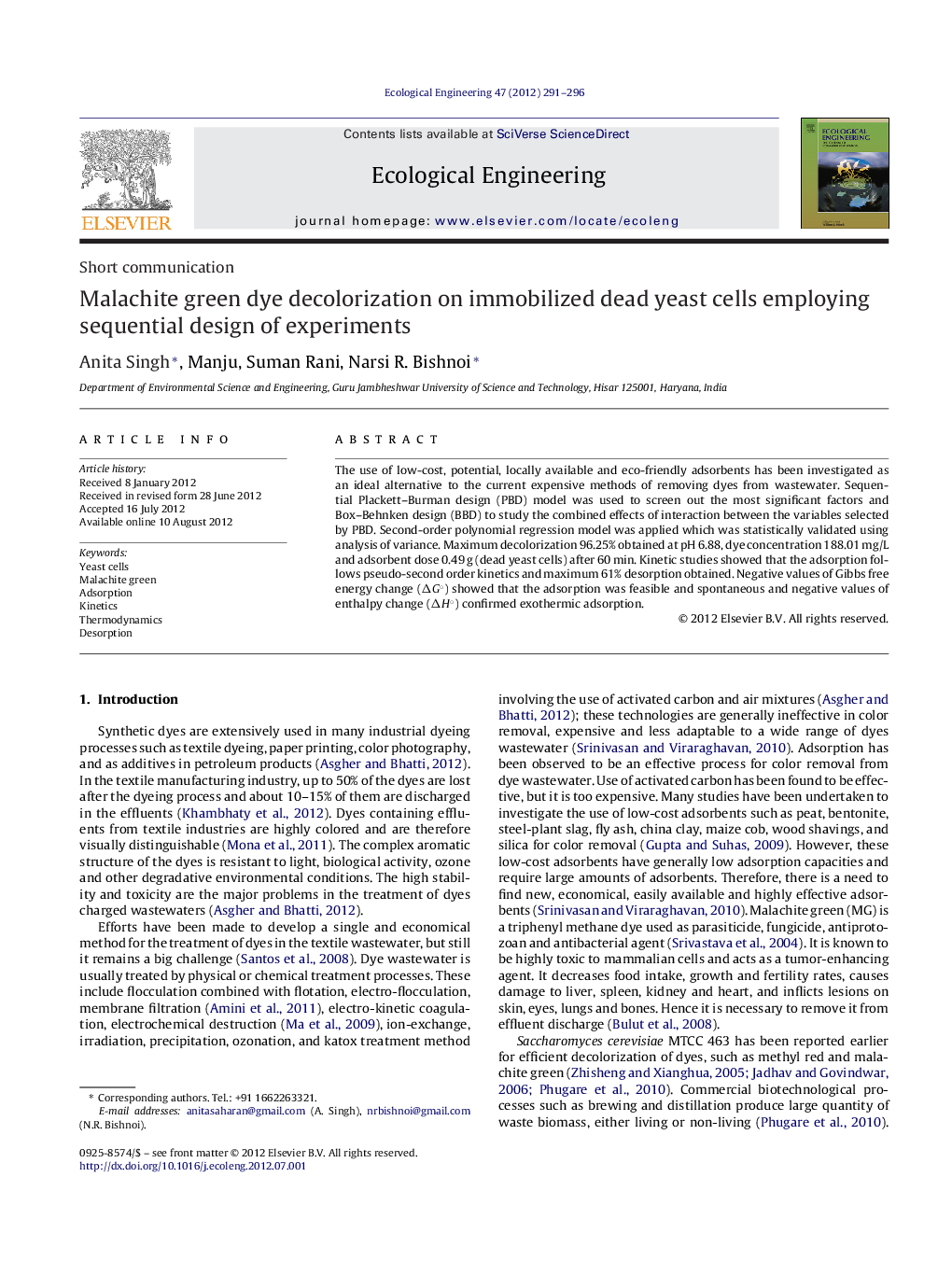| Article ID | Journal | Published Year | Pages | File Type |
|---|---|---|---|---|
| 4390033 | Ecological Engineering | 2012 | 6 Pages |
The use of low-cost, potential, locally available and eco-friendly adsorbents has been investigated as an ideal alternative to the current expensive methods of removing dyes from wastewater. Sequential Plackett–Burman design (PBD) model was used to screen out the most significant factors and Box–Behnken design (BBD) to study the combined effects of interaction between the variables selected by PBD. Second-order polynomial regression model was applied which was statistically validated using analysis of variance. Maximum decolorization 96.25% obtained at pH 6.88, dye concentration 188.01 mg/L and adsorbent dose 0.49 g (dead yeast cells) after 60 min. Kinetic studies showed that the adsorption follows pseudo-second order kinetics and maximum 61% desorption obtained. Negative values of Gibbs free energy change (ΔG°) showed that the adsorption was feasible and spontaneous and negative values of enthalpy change (ΔH°) confirmed exothermic adsorption.
► Malachite green is a triphenyl methane dye which is toxic, hazardous and carcinogenic in nature. ► Utilization of yeast biomass left after ethanol production as adsorbent for dye removal. ► Sequential design of experiments for dye decolorization. ► The behavior of adsorption studied by kinetics and thermodynamics studies. ► The desorption study showing that the adsorbent can be reused again.
